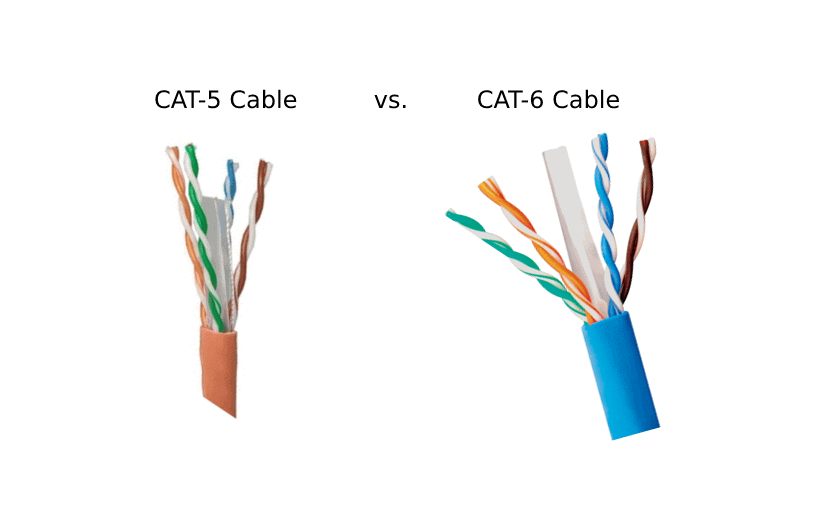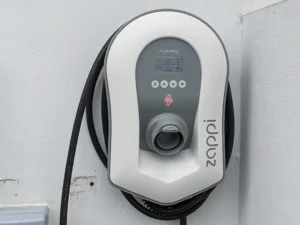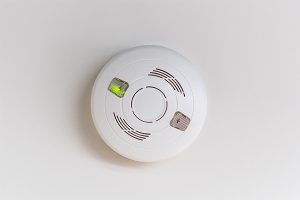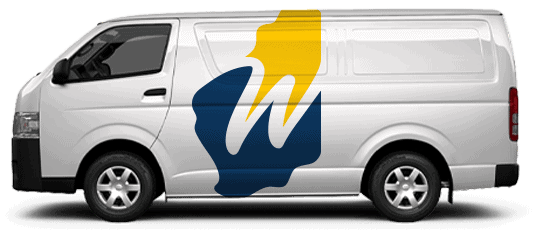Differences Between the CAT5e and CAT6 Cables
It can be difficult to choose an Ethernet cable because they are continually improved to increase bandwidth speeds and minimise noise. We will outline the distinctions between CAT5e and CAT6 in this article so that you can identify the best option for your application and make an informed decision.
CAT5e Cable: What is it?
Network cable standard CAT5e, sometimes referred to as Category 5e or Category 5 Enhanced, was approved in 1999. Compared to the previous CAT5 standard, CAT5e delivers much better performance, including up to 10 times quicker speeds and a significantly increased capacity to cover distances without experiencing crosstalk. Twisted pair wires of 24-gauge are characteristic of CAT5e cables, which may enable Gigabit networks across distances of up to 100 metres between segments.
CAT6 Cable: What is it?
Only a few years after CAT5e was released, Category 6 (CAT6) was derived. Twisted pair cables for Ethernet are standardised, and CAT6 is backwards compatible with CAT5/5e and CAT3 cable standards.
In addition to supporting Gigabit Ethernet segments up to 100 m, CAT6 cables can also be used in 10-Gigabit networks over a certain distance. CAT5e was generally used to connect to workstations during the turn of the century, whereas CAT6 served as the backbone infrastructure connecting routers to switches.
Bandwidth of CAT5e and CAT6
The maximum speed supported by CAT5e and CAT6 is 1000 Mbps, or one gigabit per second. For the most majority of internet connections, the speed is significantly more than adequate. It’s unlikely that you now have a connection that can deliver speeds of up to 500 Mbps.
The bandwidth that the cable can provide for data transfer is where the biggest distinction between CAT5e and CAT6 cable exists. CAT6 cables are made to operate at frequencies of up to 250 MHz as opposed to CAT5e’s 100 MHz. This indicates that more data may be processed simultaneously via a CAT6 connection. Imagine it like the distinction between a two- and four-lane motorway. While you can go at the same pace on either, a 4-lane highway can carry far more traffic at once.
CAT6 Speed compared to CAT5e
CAT6 cables enable speeds up to 10GBASE-T or 10-Gigabit Ethernet since they operate at up to 250 MHz, which is more than twice as fast as CAT5e cables (100 MHz), whereas CAT5e cables can only support 1GBASE-T or 1-Gigabit Ethernet.
CAT6 Crosstalk versus CAT5e
Twisted pair cables are what CAT5e and CAT6 are. In both cases, the cables typically have 4 twisted pairs (8 wires) of copper wires. Of the past, the four twisted pairs in CAT6 were typically segregated by nylon spline wiring to achieve the 250 MHz performance. This made the cable stiff. Modern CAT6 cables are more flexible and employ additional noise-cancelling techniques.
CAT6 has stricter requirements for crosstalk and system noise, regardless of the usage of a spline. Compared to CAT5e, CAT6 not only offers much less interference or Near-End Crosstalk (NEXT) in the transmission, but it also enhances Return Loss (RL), Equal-Level Far-End Crosstalk (ELFEXT), and Insertion Loss (IL). Higher data transfer rates, reduced system noise, and fewer errors are the end results.
CAT6 Maximum Length compared. CAT5e
Each network segment can be as long as 100 m using CAT5e or CAT6. Beyond this length, the maximum speeds will never be reached. This may lead to a connection that is sluggish, unstable, or even unreliable. The signal can be boosted via repeaters or switches if it has to traverse distances greater than 100 metres.
The maximum length of a CAT6 cable drops to 55 m when utilised for 10GBASE-T. The rate reduces to 1GBASE-T beyond this distance. Use of CAT6A, also known as Augmented Category 6 cable, is advocated if 10GBASE-T needs to be sent throughout the entire 100 m.
Visual Differences Between CAT5e and CAT6
Frequently, the cable’s category is printed there. CAT6 cables are frequently thicker than CAT5e cables since they employ thicker copper wires, but if they don’t you won’t be able to tell the cable type by colour or RJ45 connector.

Visual Difference Between CAT5e and CAT6
Costs of CAT5e and CAT6
The key factors affecting the price of Ethernet cables are length, quality, copper content, and manufacturer, with other factors also playing a role. CAT6 cables typically cost between 10% and 20% more than CAT5e cables.
CAT5e vs. CAT6 Cable Comparison Summary
When selecting the proper cable, there are many factors to take into account. Which network speed is necessary: 100 Mbps, 1000 Mbps, or 10 Gbps? How many people utilise it? When there are many users, the cable’s frequency (MHz) becomes crucial. Is the cable intended for usage inside or outside? Does the cable need to be flexible or rigid? Exist any potential stuttering sources? so forth. The decision ultimately depends on your application.
It is frequently stated that since the network infrastructure’s existing hardware does not require 10 Gbps speeds, investing in higher-performance connections like CAT6 is not worthwhile. However, hardware is upgraded over time because it is far simpler to do so than to install new wires. It is typically a good idea to choose the higher-quality cable because the cost difference between CAT5e and CAT6 is not great and doing so will help the network infrastructure and performance in the near future.
However, regardless matter whether you choose CAT5e or CAT6, the most crucial factor is that you always choose a 100% copper quality cable. The data demonstrates that, although typically accounting for only 5% of an initial network investment, a subpar cabling system can result in up to 70% of network downtime. Therefore, don’t compromise on a cabling system that doesn’t give guaranteed performance to avoid risking widespread failure. Always seek out a source, like Black Box, that offers a lifetime warranty on independently ETL-verified CAT5e and CAT6 cables.
Contact us today on 0410 112 903







